A safe haven for some of the world’s most colorful creatures and unique landscapes, protecting Mexico’s biodiversity is of the utmost importance. From deserts and jungles to mountains and coastlines, Mexico is home to more than 170 protected natural areas, five of which are UNESCO Natural World Heritage sites.
As more sustainably focused hotels and excursions pop up throughout the country, many travelers are turning to eco-friendly options to help support Mexico’s commitment to its flora, fauna and indigenous communities.
Here are a few places to support if you want to get involved.
Destinations
Explore four destinations that are making a difference by reducing their carbon footprint, rehabilitating wildlife and giving back to their communities.
Holbox Island
A place where life moves a little slower, Mexico’s Holbox Island is unique in that there are no cars allowed. Only accessible by boat, Holbox Island is well known for having a lower carbon footprint than other tropical destinations due to its automobile-free streets.
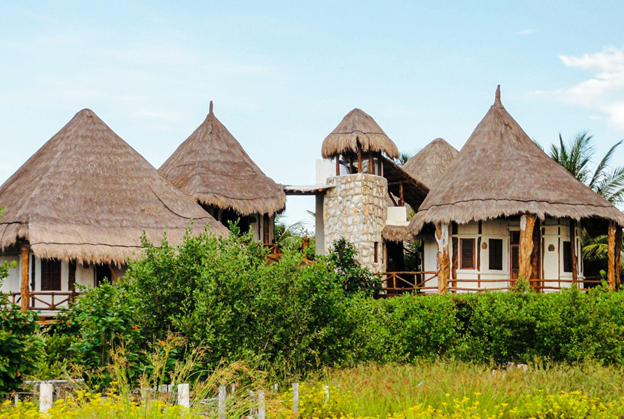
Instead, locals get around on foot or by bicycle adding a certain charm that’s unique to the region. But the island’s commitment to sustainability doesn’t end there. In fact, several Holbox Island hotels were made using recycled materials and were specifically designed to support the preservation of the local environment.
Maya Ka’an
One of the country’s most protected regions, Maya Ka’an is the place for travelers hoping to experience lush natural areas and Mayan-centric communities. Maya Ka’an comprises nine ecotourism attractions in Quintana Roo (aka the ‘Mayan Zone’), some of which you may be familiar with including Punta Herrero, Punta Muyil, Punta Allen, Sian Ka’an Biosphere Reserve, Noh Bec, Tihosuco Chunhuhub, Felipe Carrillo Puerto, Señor and Kantemó.
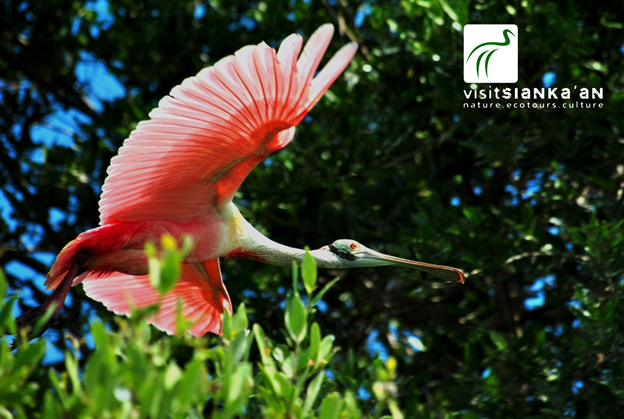
A visit to Maya Ka’an is an excellent way to truly experience the beauty of Mexico and its people. As for things to do, travelers can expect to get in touch with their wild side with outdoorsy activities like kayaking, birdwatching and swimming in saltwater canals.
Mazunte
Located in the southern state of Oaxaca, Mazunte made visitmexico.com’s list of Pueblos Mágicos (Magical Towns). And honestly, with golden sand beaches and sparkling turquoise waters, it’s easy to see why. However, what really sets Mazunte apart from other regions is its commitment to one of the most vulnerable marine species in Mexico: the turtle. Travelers hoping to get a glimpse of these flippered friends should head to two notable places — El Centro Mexicano de la Tortuga (Mexican Turtle Center) and the Fábrica de Cosméticos Naturales (Natural Cosmetics Factory).
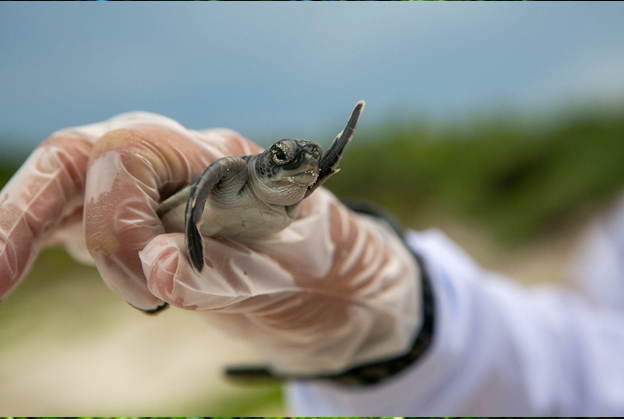
El Centro Mexicano de la Tortuga is an organization that focuses on the conservation of local species of sea turtles where visitors will learn about the importance of preservation and can even explore the onsite museum, Museo Vivo de la Tortuga (Living Museum of the Turtle). Just down the street, Fábrica de Cosméticos Naturales is a place where villagers create hygiene products like oils, soaps and bath gels using ingredients that won’t disrupt the region’s ecological balance.
Sierra Gorda
Stepping into Querétaro’s Sierra Gorda feels like something out of a fairy tale. In fact, the area’s vibrant jungle scenery and glassy freshwater pools have such a magnetic draw that a series of carbon-neutral cabins were built to encourage sustainably-minded travelers to explore and support the area’s conservation.
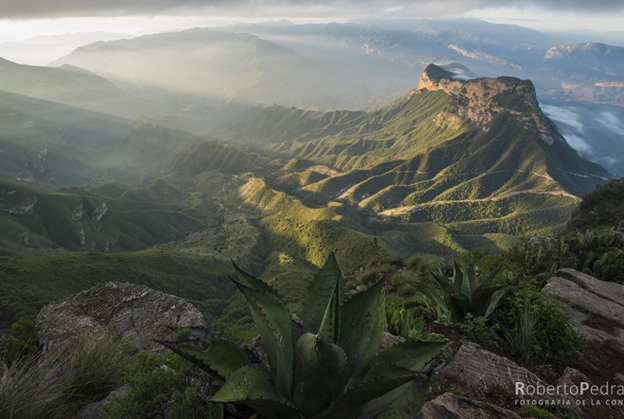
Impressive scenery isn’t all that Sierra Gorda has to offer, the destination is also home to a vibrant community of locals who embrace visitors with kindness. Best of all, all the funds raised in Sierra Gorda go directly to the community ensuring that it can continue to thrive for generations to come.
Hotels
Discover three hotels that travelers can feel good about staying at with top-notch certifications, up-cycled digs and off-the-grid accommodations.
Hotel Xcaret
According to their website, Hotel Xcaret “was born using nature itself as the essential element to conserve and protect it.” So, what exactly does that look like? It means certifications from The United Nations Global Compact, the world’s largest international social responsibility initiative and Earth Check, a global organization of business advisors specializing in sustainability.
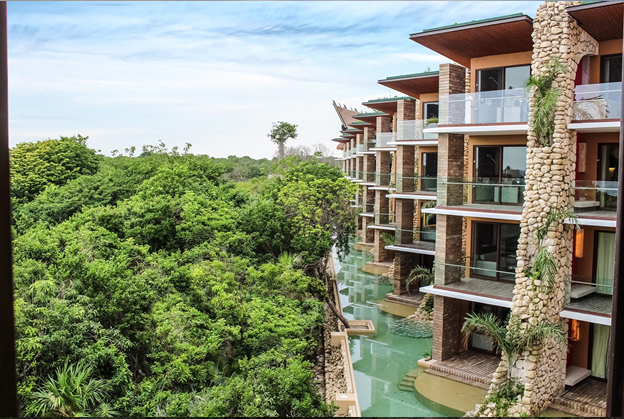
Plus, Hotel Xcaret supports animal welfare and conservation programs for endangered species including scarlet macaws, mangroves, sea turtles, manatees, coral reproduction, stingrays and more.
Book Hotel Xcaret on VAX.
AZULIK Tulum
Do you dream of waking up on a secluded Caribbean beachfront property? If the answer is “yes,” book your next stay at AZULIK Tulum, a Mexican eco-hotel and Mayan wellness center. Founded on a hefty dose of spirituality and good vibes, this hotel has no Wi-Fi or electricity.
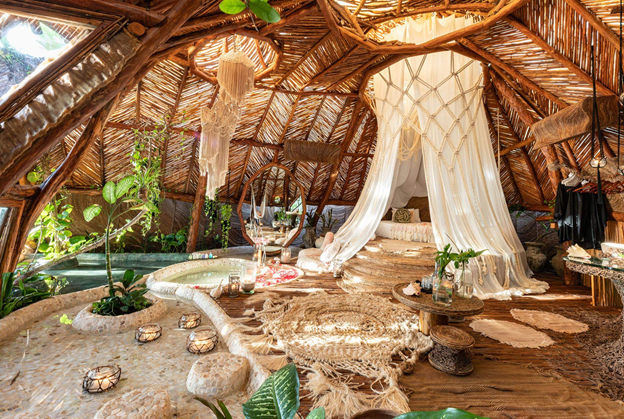
Instead, visitors are encouraged to spend their time enjoying onsite creative workshops and spa facilities between stops at the well-stocked beach bar. Oh, and the private beach is clothing-optional — if you feel like letting it all hang out.
El Patio 77
One of Mexico City’s first eco-friendly hotels, El Patio 77 gives travelers the once-in-a-lifetime opportunity to spend the night in an upcycled 19th-century mansion. The mansion consists of eight suites, each of which is designed to represent a different Mexican state.

To make things even better, each room is decked out with locally sourced and recycled furniture, biodegradable toiletries, sinks and showers powered by rainwater and solar-powered heating throughout the building.
Excursions
When selecting an ecotourism-approved excursion there are a few key factors to keep top-of-mind. Firstly, the activity should have a minimal impact on the environment and native communities. What’s more, the excursion should be a positive experience for both travelers and locals alike, while contributing funds toward local efforts when possible. Lastly, any good tour will educate guests on a region’s diverse cultures while stressing the importance of respecting the environment.
A few examples of eco-friendly excursions include backpacking through the jungle, biking in local villages, whale watching, snorkeling in coral reefs, visiting ruins and historical sites, exploring protected natural areas and national parks and much, much more.




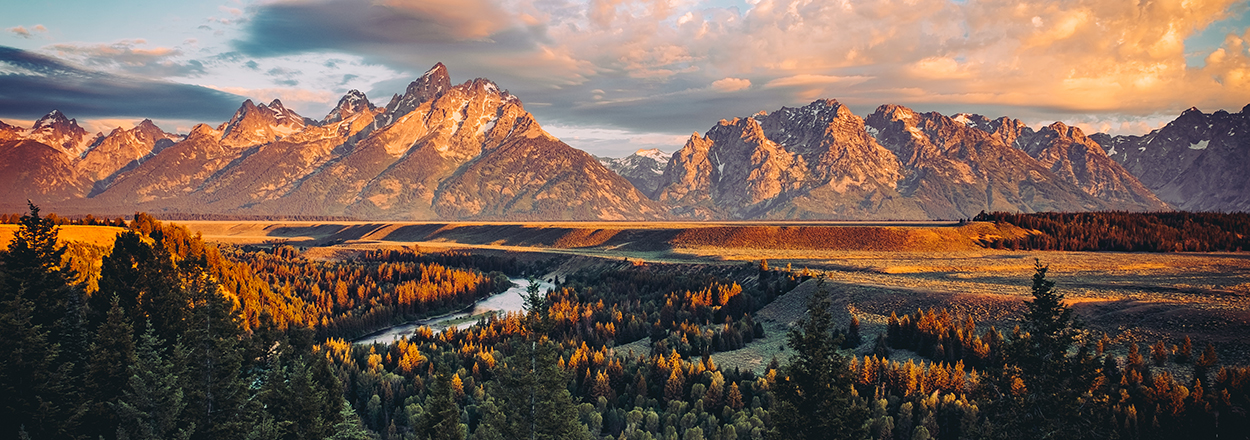

comments